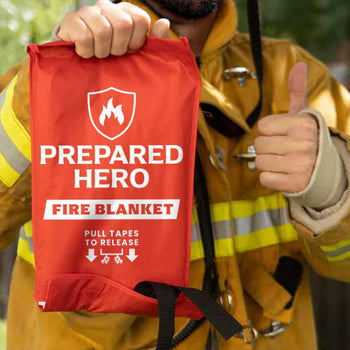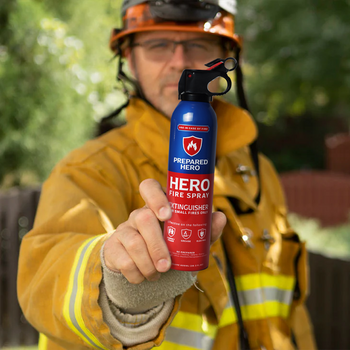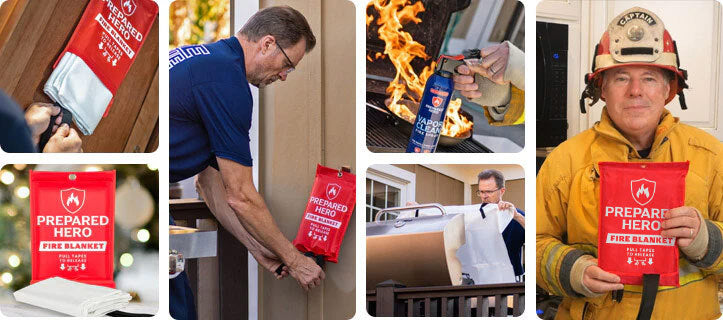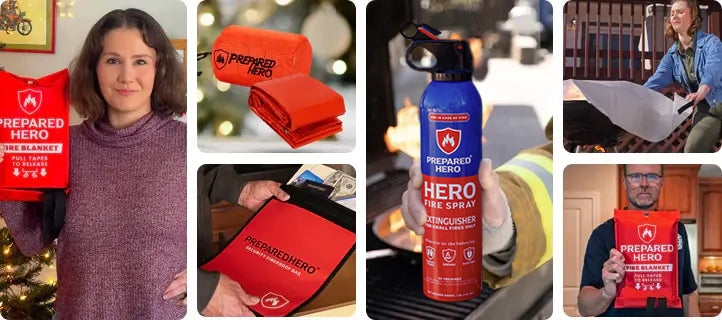Where you put your smoke detectors matters just as much as installing them. Proper placement makes sure they can detect...
According to the NFPA (National Fire Protection Association), 118,000 non-residential structure fires caused about 150 civilian deaths, 1,300 civilian injuries, and $3.3 billion in direct property damage in a year.
While you hope a fire never occurs at work, fire safety training is crucial. But how exactly do you conduct fire safety training at work? Is it mandatory? In this post, we’ll go over the key steps you can take to keep your team safe during a workplace fire.
Is Fire Safety Training Mandatory for Companies?
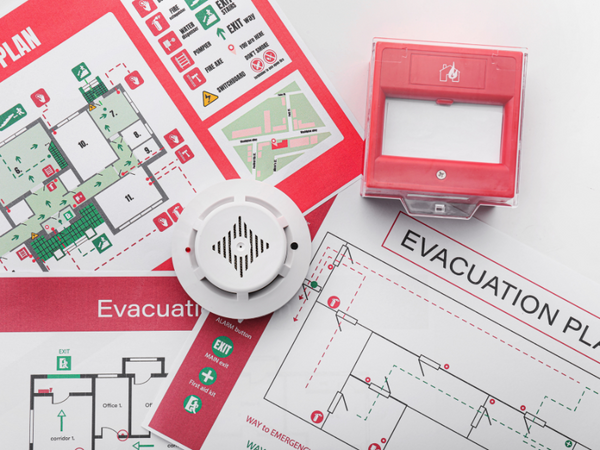
Yes, fire safety training is mandatory for companies in the US. The Occupational Safety and Health Administration (OSHA) requires it to keep workplaces safe and employees prepared. If your job involves any fire risk, your employer must train you on fire hazards, using extinguishers, and how to evacuate properly.
Fire safety training usually happens when you’re hired and once a year after that. If you’re expected to use a fire extinguisher, your training must be hands-on. You also need to know the PASS fire extinguisher method and the RACE acronym.
In addition, companies have to keep records showing who was trained, when, and by whom. These records must be available for OSHA if they ask. Employers must also plan for safe evacuations, including support for disabled workers and fire alarms to alert everyone in case of fire. Some businesses even do fire drills or offer live fire training.
In short, fire safety training isn’t optional. It’s required, and it’s smart. It protects lives and keeps workplaces from turning into disasters. Even if it’s not your favorite meeting of the year, it could save your life.
Why Is Fire Safety Training Important at Work?

Fire safety training at work matters more than most people think. It’s not just about rules. It’s about keeping everyone safe, calm, and ready to act if a fire breaks out. Here are the top reasons why fire safety training matters at work:
1. Fire safety training saves lives.
Training employees makes sure they can respond quickly and safely when a fire breaks out. Determine a fire exit strategy, make sure exit routes follow the criteria, and know where the emergency exits are.
Employees should also be familiar with fire prevention tools like fire blankets, fire sprays, fire protection gloves, flame shields, and fire extinguishers.
2. Fire safety training increases confidence and reduces panic.
Fire safety training makes everyone more confident during a fire emergency. It also reduces panic and anxiety by equipping employees with the knowledge and skills to handle fires. Take note: a prepared workplace will likely remember and follow safety protocols during an emergency.
Additionally, people tend to make mistakes because of ignorance during fire emergencies. This is something you don't want to happen to your staff. Prioritizing your employees’ and customers’ safety is a must.
3. Fire safety training reduces fire risk.
Workplace fire training isn't just about knowing what to do when a fire breaks out. It can also reduce the risk of a fire occurring in the first place.
When trained, people can stop small fires before they get out of control. They'll also know how to identify and prevent fire hazards from starting fires. Overall, awareness is the easiest way to prevent fires from breaking out. If everyone is on the same page about keeping your workplace safe and avoiding fires, the chances of one breaking out become low.
4. Fire safety training lets you evacuate safely.
There are instances when people can't put out a fire and must evacuate the building. While material possessions can be replaced, lives can't.
Fire safety training helps people evacuate safely. It involves planning escape routes, knowing how to crawl under smoke, and teaching employees to meet at a certain point outside your house.
5. Fire safety training helps protect your property.
While the main purpose of fire safety training is to save lives, it can also help minimize property damage. It teaches your staff how to prevent fires, when to call the authorities, and limit the spread of fire.
How to Conduct Fire Safety Training

Fire safety training doesn’t have to be complicated, but it needs to be clear and consistent. Everyone should know how to prevent fires, what to do if one starts, and how to stay safe. Here’s how to conduct fire safety training the right way:
1. Start With Fire Prevention Basics
Focusing on preventing fires is the first step to workplace fire safety. Make sure employees know how to spot fire hazards and what to do about them. This means training them to check for things like frayed wires, overloaded outlets, or equipment that's too hot. You should also teach them how to safely handle flammable liquids, gases, and everyday items like paper piles and dusty vents.
Don’t forget office kitchens as well. Teach staff to check appliances and never leave them running unattended. Smoking policies also matter. Cigarette butts can smolder and start a fire hours later, so make sure there’s a safe, designated smoking area with disposal bins.
In short, the more hazards your team can spot and report early, the less likely you’ll face a fire in the first place.
2. Teach Fire Response Skills
If a fire occurs, everyone should know exactly what to do. The first decision is crucial: should they try to put it out or evacuate?
Given this, employees should be trained on how to assess the situation. For example, a small flame in a toaster might be manageable with a fire blanket, but a growing electrical fire behind the wall means it's time to evacuate immediately.
In particular, fire response training should include:
- How to recognize the type of fire
- What fire prevention tools to use (and when)
- How to activate your emergency system
- When to call 911
-
When to leave everything and go
Some workplaces may also have fire suppression systems or assigned fire team members. If so, make sure the team knows how to use the equipment and what their responsibilities are.
3. Set Up a Clear Evacuation Plan
Evacuation isn’t just about getting to the nearest exit. Your team should know the plan backward and forward. Include primary and backup routes, because the closest door might be blocked during a fire.
Important points to cover:
- Evacuation maps and signs
- Roles (fire warden, route guide, floor monitor)
- Where to go after evacuating (assembly points)
- What not to do (e.g., no grabbing personal items unless it's safe)
- How to check in and confirm safety
You should also have a backup assembly spot in case the first one is blocked or unsafe.
4. Run Fire Drills Regularly
Fire drills help you see if the training actually works. Make these drills realistic, don’t just walk out the door. Add scenarios like blocked exits or missing team leaders.
Before the drill, review the evacuation plan with everyone. During the drill, time the process and see how it goes. What did people find confusing? What process took too long? Then, use this information to improve your plan and training. Remember, it’s not about getting it perfect the first time. It’s about learning and adjusting!
5. Keep Safety Equipment Ready
Faulty equipment can ruin everything, even if your team is well-trained. Fire prevention kits, smoke detectors, emergency lights, and exit signs all need regular checks.
Set up a maintenance schedule to:
- Test smoke detectors every month
- Make sure the lights and exit signs work
- Replace batteries in backup systems
Then, keep records of all inspections. This is important for safety, and inspectors usually ask for it.
What Are the Five Steps of Fire Safety?

From spotting hazards to keeping your plan up to date, here are the five steps of fire safety:
1. Spot the Fire Hazards
Start by walking through your workplace and looking for anything that could start a fire. This includes overloaded power strips, appliances, or clutter. Also, check for things that could catch fire easily, like paper, packaging, or flammable liquids. Don’t forget about smoking areas and work that involves heat, such as welding. The goal here is to find those problem spots before they turn into something worse. Check out who is responsible for conducting a hazard assessment here.
2. Identify Who’s at Risk
Everyone in the building is at risk in a fire, but some people may need extra help. Think about young employees, older adults, or people with disabilities. Visitors or contractors who aren’t familiar with your layout are also vulnerable. Make sure your fire prevention plan includes ways to help these groups if something goes wrong.
3. Evaluate the Risks and Take Action
Now that you know the hazards and who’s at risk, take a step back and ask: how bad could it be? Then decide what you need to fix or add.
Do you have enough emergency exits? Are they easy to reach in the dark or in smoke? Do you need smoke alarms, emergency lights, or more exit signs? Once done, brainstorm what should be done and take action.
4. Record, Make a Plan, and Train Everyone
Write down your fire risk assessment and create a solid fire safety plan. This includes what to do in a fire, who’s responsible for what, and how often you’ll run drills.
Make sure everyone knows the plan. Yes, even new hires and temps need to know. Then, train your team on what to do, where to go, and how to use fire safety equipment. You should also keep all your equipment maintained and check your safety systems regularly.
5. Review and Update Regularly
Fire safety isn’t a one-and-done task. Review your plan often, especially if things change. These include getting new equipment, changing layouts, or adding chemicals. If you’ve had a fire scare or near miss, revisit your assessment. It’s all about keeping things current so your workplace stays safe.
What Are the 4 P’s of Fire Safety?

The 4 P’s of fire safety are Prevention, protection, preparedness, and practice.
Prevention is about stopping fires before they start. This means checking for fire hazards like frayed wires, blocked vents, or flammable materials near heat sources. You should also train people on how to handle equipment safely and keep work areas clean.
Protection comes next. This means having the right tools in place if a fire breaks out. Think fire extinguishers, smoke alarms, sprinkler systems, and exit signs. These things can reduce damage and give people time to get out safely.
Preparedness is making sure everyone knows what to do during a fire. Have a plan that includes escape routes, meeting points, and who’s responsible for what. Make sure the plan covers everyone, including visitors and people who may need extra help.
Practice ties it all together. Run regular fire drills so your team doesn’t panic in a real emergency. Go over the plan, walk the routes, and make sure everyone knows how to respond.
Stick to these four steps, and you’ll be in a much better spot if a workplace fire happens.
What Is the Golden Rule of Fire Safety?
The golden rule of fire safety is to get out, stay out, and call for help. If there's a fire that you don’t feel confident putting out, don’t try to grab your things. Just leave the building right away. Fires spread fast, and the smoke alone can be dangerous in seconds.
Once you’re out, stay out. Don’t go back in for any reason. Let the fire department handle it. Even if you think it’s safe, re-entering a burning building can be deadly. Once you’re out, call 911 or your local emergency number. The sooner help arrives, the better.
This rule applies everywhere—at work, at home, or out in public. Following the golden rule of fire safety can save lives. Remember, staying safe is all about acting fast and not taking risks.
Conclusion
Fire safety training isn’t just another box to check. It’s an effective way to protect your employees, workplace, and future. With the right plan, tools, and practice, you’ll be ready if something ever goes wrong.
Do you want reliable, easy-to-use, and affordable tools to put out small fires before they spread? Check out Prepared Hero’s fire prevention tools here, and get up to 51% off on certain items. Stay prepared, hero!


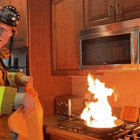 Fire
Fire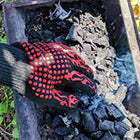 Safety
Safety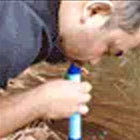 Survival
Survival Protection
Protection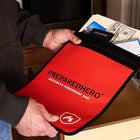 New
New
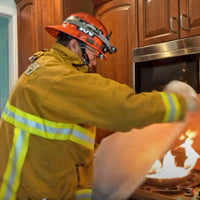 Fire
Fire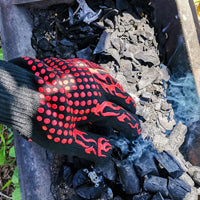 Safety
Safety Survival
Survival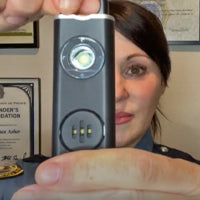 Protection
Protection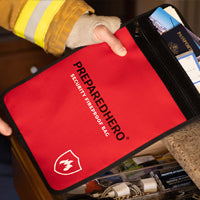 New
New
